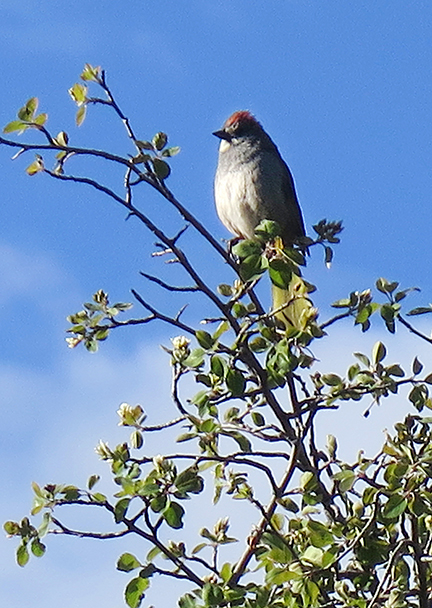Moore Open Space – an inholding of habitat

Pitkin County’s Moore Open Space, roughly 64 acres on the edge of Aspen, was among the county’s first significant open space acquisitions. Heralded at the time of its purchase, in 1992, as a remnant of an ecosystem that was rapidly disappearing from the upper Roaring Fork Valley, Moore remains a special inholding of remarkable habitat.
To the casual observer, the Moore property many not look like much. It’s devoid of tall trees but for a small stand of cottonwoods near the highway. Sagebrush and dense bushes crowd the undulating landscape. Where the small hills and knolls recede, nondescript grasses intermixed with sagebrush and dryland wildflowers crowd a narrow recreational trail that loops through the property. On a summer afternoon, the property is hot, arid and windswept.
Hidden in plain view is a diverse, native plant community that is important to various species of wildlife, particularly some birds. Moore contains Gambel oak / serviceberry shrubland, which is ranked as imperiled by the Colorado Natural Heritage Program. Its serviceberry tall shrubland is even less common. Add in the mountain big sagebrush so prevalent on the open space and Moore provides an important patch of habitat for migrating and wintering elk and mule deer, as well as many smaller mammals. Several bird species that are dependent on sagebrush shrublands find sanctuary at Moore Open Space.
Moore is currently the focus of a management plan update (the last management plan for the property was adopted in 2001). Biological studies to document the vegetation and wildlife present on the property were conducted in the summer of 2019 to inform management decisions for the open space. The draft management plan calls for these studies to be conducted every five years to track the health of the habitat.
While no rare or endangered species of plants or animals were found at Moore, a total of 77 plants were identified on the open space, 56 of which are native. Treatment of noxious weeds on the open space has continued since the acquisition of the parcel 19 years ago, and these efforts have resulted in a noticeable improvement in the state of the vegetative mix.
Also detected on the open space were 21 species of birds, including many that are tolerant of human activity and a few that are less so, such as the Green-tailed towhee (pictured above at Moore) and Virginia’s warbler. The Brewer’s sparrow, which is dependent on sagebrush shrubland habitat, was also documented. The presence of species that require specific vegetation and high-quality habitat speaks to the importance of Moore Open Space. The Green-tailed towhee breeds in dry shrubby hillsides and sagebrush flats; 21 of them were documented during the 2019 wildlife survey of Moore.
Moore provides suitable habitat for several species of Greatest Conservation Need (as listed by Colorado Parks and Wildlife), including the Brewer’s sparrow and Virginia’s warbler – both documented on the property in 2019. Others include the Band-tailed pigeon, Fringed myotis (a bat species), Hoary bat and Little brown bat.
– Pitkin County Open Space and Trails
